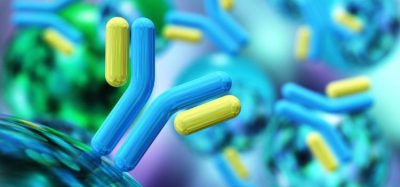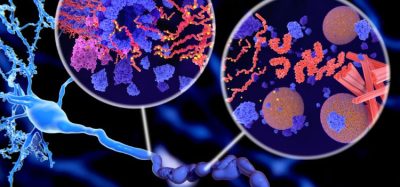Nitrosamine drug substance-related impurities (NDSRIs)
Posted: 24 June 2022 | Dave Elder (David P Elder Consultancy) | 1 comment
Dave Elder looks at the guidelines drug manufacturers should follow to reduce nitrosamine impurities, following several recent withdrawals.
RECENTLY, there has been a spate of withdrawals caused by nitrosamine drug substance-related impurities (NDSRIs). The latest recalls have centred on Orphenadrine Citrate ER Tablets1 and Quinapril HCl/Hydrochlorothiazide2 due to the presence of N-nitroso Orphenadrine and N-nitroso Quinapril, respectively. These NDSRIs can form during manufacturing or subsequent storage of the drug product. The origin of NDSRI impurities has been ascribed to nitrite impurities present in common excipients at parts-per-million (ppm) levels.3
Nitrite impurities have been seen in a variety of commonly utilised excipients as well as pharmacopeial-grade water and this could lead to the formation of NDSRIs in some drug products. The US Food and Drug Administration (FDA) requires that manufacturers establish whether nitrosamines, including NDSRIs, could be present in active pharmaceutical ingredients (APIs) and drug products, using the “three-step mitigation strategy described in the agency’s guidance”.4 Manufacturers should now be focused on the final steps, ie, two and three, of the risk-based process, ie, the confirmatory testing and reporting changes stages of their mitigation activities. If NDSRIs are detected in the drug product at unacceptable levels, FDA strongly urges applicants “to develop control strategies and/or design approaches to reduce NDSRIs to acceptable levels”.5
FDA wants manufacturers to utilise mitigation strategies that prevent formation of NDSRIs5 including (a) inclusion of an antioxidant, such as vitamin C or vitamin E, in the formulation to inhibit the formation of nitrosamines,6,7 or (b) basifying the formulation,8 as the formation of nitrosamines typically occurs under acidic conditions. FDA briefing documents that address these reformulation strategies should include a description of the formulation design strategy that is employed to minimise the formation of NDSRIs in the drug product, including supporting manufacturing information and, at a minimum, three months of accelerated stability data demonstrating control of NDSRI. For approved new drug applications (NDAs) and abbreviated new drug applications (ANDAs) that require reformulation as part of their mitigation strategy, bridging in vitro or in vivo bioequivalence studies will also be needed.5
In parallel, European Medicines Agency (EMA) has issued an update on its guidance. It has also outlined the various issues impacting on the drug product.9 These include reaction of amines within the APIs (or their impurities/degradants) with a nitrosating agent present in the excipients during manufacture or storage. Secondary amines appear to be particularly susceptible, although some tertiary amines have also been implicated.3
Degradation of APIs, especially those APIs that possess intrinsic reactivity (eg, presence of nitro-alkyl, oxime) or other functionality, or by the presence of an exogenous nitrosating agent, eg, nitrite, is also an important consideration.10 Both the rate and extent of the nitrosation reaction can be influenced by crystal structure, crystal habit and environmental storage conditions, ie, temperature, humidity etc.11,12 In addition, oxidation of amine-containing functional groups, ie, hydrazines present in APIs or their impurities/degradants (eg, from hydrazones and hydrazides), during manufacturing or throughout shelf‑life storage are also significant concerns. Potential oxidants include oxygen and peroxides – common impurities in some polyoxyethylene excipients.3
Finished products utilising blister packs with nitrocellulose lidding foil can also be prone to nitrosamine contamination, as nitrogen oxides can be generated from the thermal breakdown of nitrocellulose during the blister heat-sealing process. Nitrosamines can then form in the presence of alkyl amines either in the printing ink or in the drug product itself – leading to drug product contamination.
In conclusion, the current drug product recalls for contamination with NDSRIs may be just the tip of the iceberg. ICH M7(R1) indicates that, “higher acceptable intakes may be justified when human exposure to the impurity will be much greater from other sources eg, food, or endogenous metabolism”. Given the ubiquitous presence of nitrosamines in the environment, water and food, and as endogenous metabolites,12 a more pragmatic outlook may be needed.
About the author
Dave Elder has nearly 40 years of service within the pharmaceutical industry at Sterling, Syntext and GlaxoSmithKline. He is now an independent GMC consultant. He is a visiting professor at King’s College, London and a member of the British Pharmacopoeia. He is a member of the Joint Pharmaceutical Analysis Group (JPAG) and the Analytical Division Council of the Royal Society of Chemistry.
References
- Sandoz, Inc. Issues Nationwide Recall of 13 Lots of Orphenadrine Citrate 100mg Extended Release Tablets Due to Presence of a Nitrosamine Impurity. March 22 2022. https://www.fda.gov/safety/recalls-market-withdrawals-safety-alerts/sandoz-inc-issues-nationwide…. Accessed on 01 April 2022.
- Pfizer Voluntary Nationwide Recall of Lots of ACCURETICTM (Quinapril HCl/Hydrochlorothiazide), Quinapril and Hydrochlorothiazide Tablets, and Quinapril HCl/Hydrochlorothiazide Tablets Due to N-Nitroso-Quinapril Content. March 22 2022. https://www.fda.gov/safety/recalls-market-withdrawals-safety-alerts/pfizer-voluntary-nationwide-recall-lots-accuretictm…. Accessed on 01 April 2022.
- Wu Y, Levons J, Narang AS, et al. Reactive impurities in excipients: profiling, identification and mitigation of drug-excipient incompatibility. AAPS Pharm. Sci. Tech. 2011;12 (4): 1248- 1263.
- Control of Nitrosamine Impurities in Human Drugs. Updated 24 February 2021. https://www.fda.gov/regulatory-information/search-fda…. Accessed on 01 April 2022.
- Updates on possible mitigation strategies to reduce the risk of nitrosamine drug substance-related impurities in drug products. 18 November 2021. https://www.fda.gov/drugs/drug-safety-and-availability/updates-possible-mitigation-strategies-reduce…. Accessed on 01 April 2022.
- Nanda KK, Tignor S, Clancy J, et al. Inhibition of N-Nitrosamine Formation in Drug Products: A Model Study. J Pharm Sci. 2021; 110(12) :3773-3775.
- Mergens WJ. Efficacy of Vitamin E to Prevent Nitrosamine Formation, New York Academy of Sciences, 1982. 393 (1), p.61-69.
- Ziebarth D, Scheunig G. Effects of Some Inhibitors on the Nitrosation of Drugs in Human Gastric Juice, Lyon International Agency for Research on Cancer International (IARC Scientific Publications 14), 1976, p. 279-290.
- Questions and answers for marketing authorisation holders/applicants on the CHMP Opinion for the Article 5(3) of Regulation (EC) No 726/2004 referral on nitrosamine impurities in human medicinal products, 24 March 2022 EMA/409815/2020 Rev.8. Nitrosamine Imp -Q&A-Mar-22.pdf. Accessed on 02 April 2022.
- King FJ, Searle A, Urquhart MW. Ranitidine—Investigations into the Root Cause for the Presence of N-Nitroso-N, N-dimethylamine in Ranitidine Hydrochloride Drug Substances and Associated Drug Products. Process Res. Dev. 2020, 24 (12), 2915–292.
- Pathways for N-Nitroso Compound Formation: Secondary Amines and Beyond. Process Res. Dev. 2020; 24(9): 1558–1585.
- Ohshima H, Bartsch H. Monitoring endogenous nitrosamine formation in man. IARC Sci Publ. 1984; 59: 233-46.
Related topics
Related organisations
The European Medicines Agency (EMA), US Food and Drug Administration (FDA)









In my opinion, basic ingredients cannot be added with the drugs which are in hydrochloride form. The best example is Quinapril. We need to add some thing which can react with nitrite faster than secondary amine and perish. One of the good example could be a urea bearing excipient in small amount.